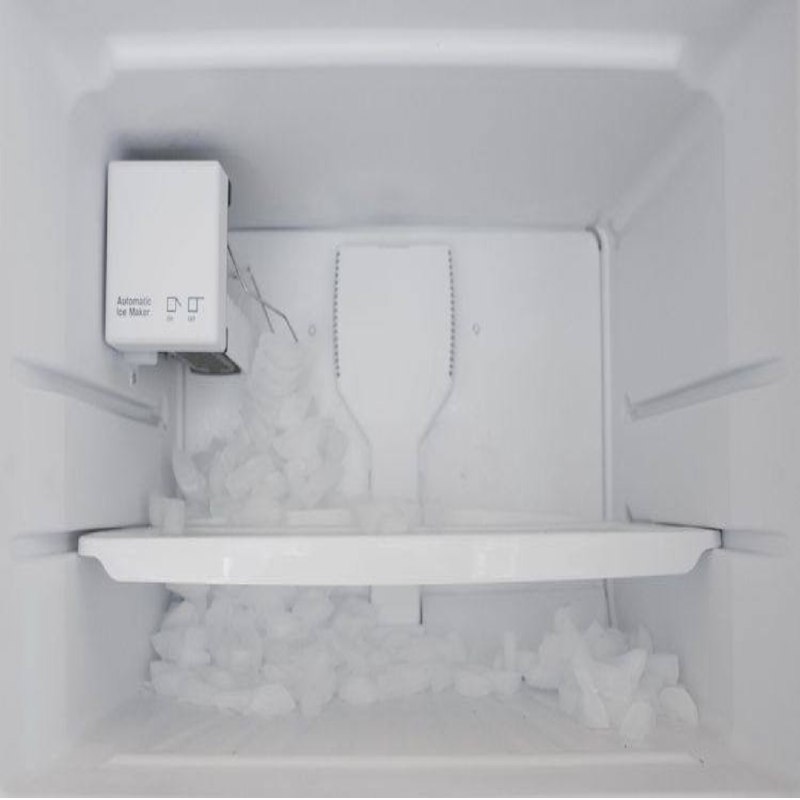ADVERTISEMENT
### **Step 5: Clean the Interior Components**
Using a soft brush or cloth, carefully clean the interior of the ice maker. Pay attention to any nooks or crannies where dust or debris may accumulate. For stubborn grime, you can use a solution of white vinegar and water (1:1 ratio) to scrub away build-up.
### **Step 6: Clean the Water Filter (If Applicable)**
If your ice maker has a water filter, remove it and clean it according to the manufacturer’s instructions. Some filters are washable and can be rinsed with water, while others may need to be replaced every few months.
### **Step 7: Clean the Ice Bin and Tray**
Take the ice bin and tray out of the machine. Wash them thoroughly with soap and warm water. For stubborn stains or build-up, you can use baking soda as a gentle abrasive.
### **Step 8: Sanitize the Ice Maker**
After cleaning all the parts, sanitize the ice maker by spraying the interior with a vinegar-water solution. Vinegar is a natural disinfectant and will help kill bacteria or mold that may be present. Allow the vinegar solution to sit for 10-15 minutes before wiping it away.
### **Step 9: Reconnect the Water Supply and Test**
Once everything is dry and reassembled, reconnect the water supply (if applicable) and plug the ice maker back in. Test it to make sure it’s producing ice properly and that there are no lingering smells or issues.
—
## **7. How to Clean Common Problems**
While regular cleaning will address most issues, here’s how to handle some specific problems:
### **Cleaning Mineral Deposits**
If you notice mineral build-up (white spots or cloudy ice), you can clean it by soaking the affected parts in a solution of vinegar and water. This will help break down the deposits. Be sure to rinse thoroughly afterward.
### **Removing Mold and Mildew**
If you spot mold or mildew inside the ice maker, it’s essential to address it immediately. Use a vinegar-water solution or a commercial mold remover, and scrub the affected areas with a brush. For persistent issues, consider running a cleaning cycle with an ice maker cleaner specifically designed to eliminate mold.
### **Fixing an Ice Maker That Won’t Produce Ice**
If your ice maker is not producing ice, it could be due to clogs, mineral deposits, or a malfunctioning part. Check the water line for any blockages, clean the interior parts, and inspect the water filter. If the issue persists, consult the manufacturer’s troubleshooting guide.
—
## **8. Preventative Maintenance Tips**
To avoid frequent cleaning and extend the lifespan of your ice maker, follow these preventative tips:
– **Use Filtered Water**: Using filtered water can prevent mineral build-up and improve the taste of your ice.
– **Empty the Ice Bin Regularly**: Don’t let the ice sit for long periods. Empty the bin regularly to prevent odors from developing.
– **Turn Off When Not in Use**: If you don’t need ice for an extended period, turn off the ice maker to save energy and reduce wear on the machine.
– **Install a Water Softener**: If you live in an area with hard water, installing a water softener can reduce mineral buildup in your ice maker.
—
## **9. What to Avoid When Cleaning Your Ice Maker**
– **Harsh Chemicals**: Avoid using bleach, ammonia, or other harsh chemicals that can leave residues inside the ice maker.
– **Abrasive Cleaning Tools**: Don’t use steel wool or other abrasive materials that could damage the interior of your ice maker.
– **Forgetting to Dry**: After cleaning, ensure that all parts are thoroughly dried before reassembling the ice maker to prevent mold and mildew growth.
—
## **10. Conclusion: Keep Your Ice Maker Clean and Fresh**
A clean ice maker ensures that you always have fresh, great-tasting ice whenever you need it. By following the step-by-step cleaning guide outlined in this article, you can easily maintain your ice maker and keep it in excellent working condition. Regular cleaning not only enhances the quality of your ice but also helps to extend the lifespan of your appliance. Don’t forget to perform routine maintenance and address any issues promptly to avoid unnecessary repairs or replacements.
With just a little effort, you can enjoy clean, crisp ice and peace of mind knowing your ice maker is running smoothly and efficiently. Happy cleaning!
